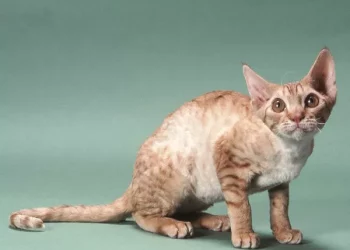The Bengal cat is a striking and charismatic breed known for its beautiful coat and wild appearance. As prospective Bengal cat owners, understanding their unique characteristics and needs is essential. One common concern for many potential owners is shedding. In this article, we will explore the shedding patterns of Bengal cats, uncover the factors that contribute to their fur maintenance, and provide helpful tips for managing shedding effectively.
Understanding Shedding in Bengal Cats:
Shedding is a natural process in which cats lose their old or damaged hair to make way for new growth. It is influenced by various factors such as genetics, climate, health, and grooming habits. While all cats shed to some extent, the amount and frequency of shedding can vary among different breeds, including the Bengal cat.
Bengal Cat Coat: A Closer Look:
The Bengal cat’s coat is one of its most distinctive features, closely resembling the coat of its wild ancestor, the Asian leopard cat. It is typically short to medium in length, dense, and has a soft, silky texture. The Bengal cat’s coat consists of two layers: the topcoat (guard hairs) and the undercoat. The topcoat helps protect the cat’s skin from elements and moisture, while the undercoat provides insulation.
Shedding Patterns in Bengal Cats:
Contrary to popular belief, Bengal cats are not considered heavy shedders compared to some other breeds. However, they do shed to a certain extent, especially during seasonal changes. Bengal cats are known to experience two shedding seasons: one in the spring when they shed their winter coat, and another in the fall when they prepare for their thicker winter coat.
Factors Influencing Shedding:
- Genetics:
The shedding patterns of Bengal cats can be influenced by their genetic background. If a Bengal cat has a lineage with breeds that are heavy shedders, they may exhibit increased shedding tendencies.
- Seasonal Changes:
Bengal cats, like many other animals, adapt to seasonal variations. During spring and fall, they may experience increased shedding as their coat adjusts to the changing weather conditions.
- Grooming Habits:
Regular grooming plays a crucial role in managing shedding in Bengal cats. Cats that are groomed consistently tend to shed less as loose hair is removed before it can accumulate on furniture and clothing.
Managing Shedding in Bengal Cats:
Regular Brushing: Brushing your Bengal cat’s coat on a weekly basis can help reduce shedding by removing loose hair. Choose a brush specifically designed for short-haired cats and be gentle to avoid causing any discomfort.
- Balanced Diet:
Providing your Bengal cat with a high-quality, balanced diet promotes healthy skin and coat. Consult with your veterinarian to ensure that your cat’s nutritional needs are met.
- Hydration and Moisturization:
Proper hydration is essential for maintaining a healthy coat. Ensure that your Bengal cat has access to fresh water at all times. Additionally, moisturizing the skin with appropriate cat-safe products can help prevent dryness and excessive shedding.
- Environmental Considerations:
Maintain a clean living environment by regularly vacuuming and dusting to minimize the accumulation of loose hair. Providing your Bengal cat with designated scratching posts can also help them remove loose hair while maintaining healthy claws.
- Regular Veterinary Check-ups:
Regular visits to the veterinarian will help identify any underlying health issues that may contribute to excessive shedding. Addressing these concerns promptly can lead to a healthier coat.
Conclusion:
While Bengal cats do shed, they are not considered heavy shedders compared to some other breeds. Understanding the shedding patterns, factors that influence shedding, and implementing effective grooming and maintenance practices can help manage shedding effectively. Remember, shedding is a natural process, and a moderate amount of shedding is normal for any cat breed. By providing proper care, nutrition, and grooming, you can enjoy the company of your Bengal cat while maintaining a clean and healthy living environment.
Recommended reading:

























